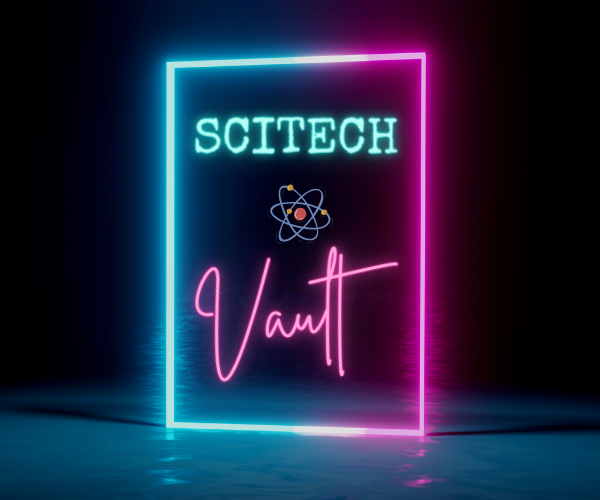Tech
Biodegradable Straws Vs. Soggy Paper Straws
New biodegradable straws do not become soggy after coming into contact with various liquids
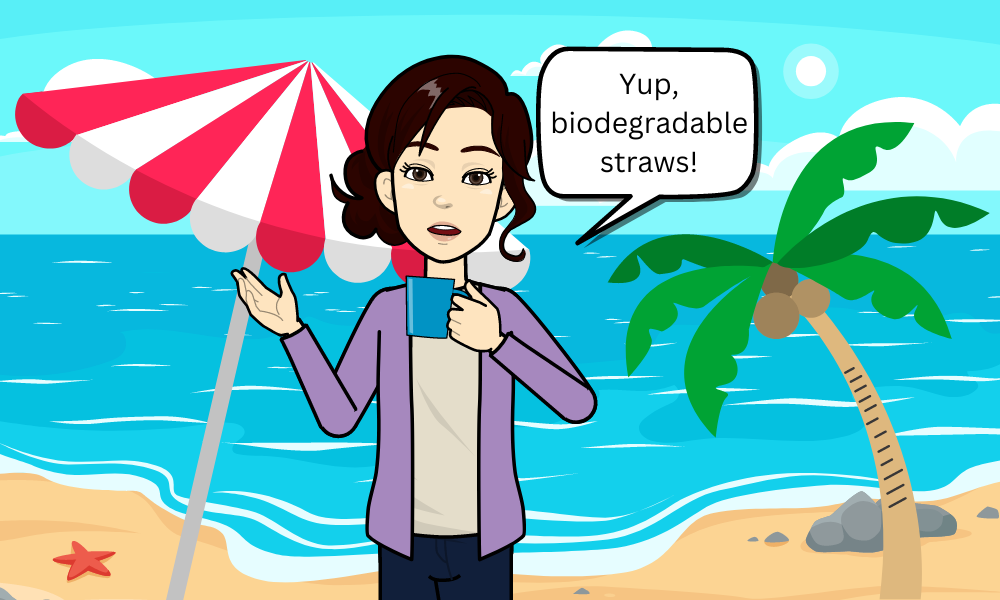
Iris enjoyed gardening. She used to make her own lemonade from freshly plucked lemons. Being an environmentally (and dentally) conscious modern woman, she used to sip her organic lemonade with a paper straw. Today morning, Iris came across an interesting scientific update on scitechvault.com. What was it about? Was it about gardening, paper straws, or both? Let’s quickly find out. No, don’t drink your lemonade yet. Kindly hold on.
What is the problem statement?
Plastic straws cause a lot of pollution because they are not easily biodegradable. Therefore, manufacturers, during recent years, have shifted their attention to paper-based straws. However, they quickly become soggy and also generate air bubbles. Whereas corn plastic straws do not decompose rapidly in water, white rice straws are not very cost-effective. After carefully studying these real-world problems, researchers from Korea decided to find a meaningful fix. So, what did they do exactly?
New biodegradable straws from Korea
Researchers from the Korea Research Institute of Chemical Technology have been successful in developing a material that is biodegradable and that does not easily become soggy after coming into contact with various fluids. According to the research team, the newly designed material exhibited high contact angles with various test liquids including oil. Whereas a low contact angle indicates good contact, a high contact angle implies that the material being tested is less likely to become wet/soggy after coming into contact with the test liquid. The biodegradable paper straws created from this material showed remarkable stability in the temperature range 4—80 °C for a period of 2 hours. The Korean researchers achieved their target using a synthetic route. Briefly, they modified the hydroxyl groups of cellulose nanocrystals with succinic anhydride. Esterification with 1,4-butanediol at 180 °C yielded the desired material that was then used to make the biodegradable straws.
Key takeaways
- Korean researchers have designed new straws that are biodegradable and that do not easily become soggy after coming into contact with various liquids and beverages including tea.
- The biodegradable material used to design these straws decomposes rapidly during aerobic composting. Significant degradation is seen after 120 days.
- We still need to know whether other laboratories are able to reproduce these results. Meanwhile, Iris is super excited and can hardly wait to grab this innovative Korean product. How about you?
Main reference
Journal: Advanced Sciences | Title: Biodegradable, Water-Resistant, Anti-Fizzing, Polyester Nanocellulose Composite Paper Straws | DOI: 10.1002/advs.202205554
By the way, did you know that gardening has been shown to exert therapeutic effects?
Tech
AI and Ethics: The Need for Meaningful Guidelines
With great power, comes greater responsibility
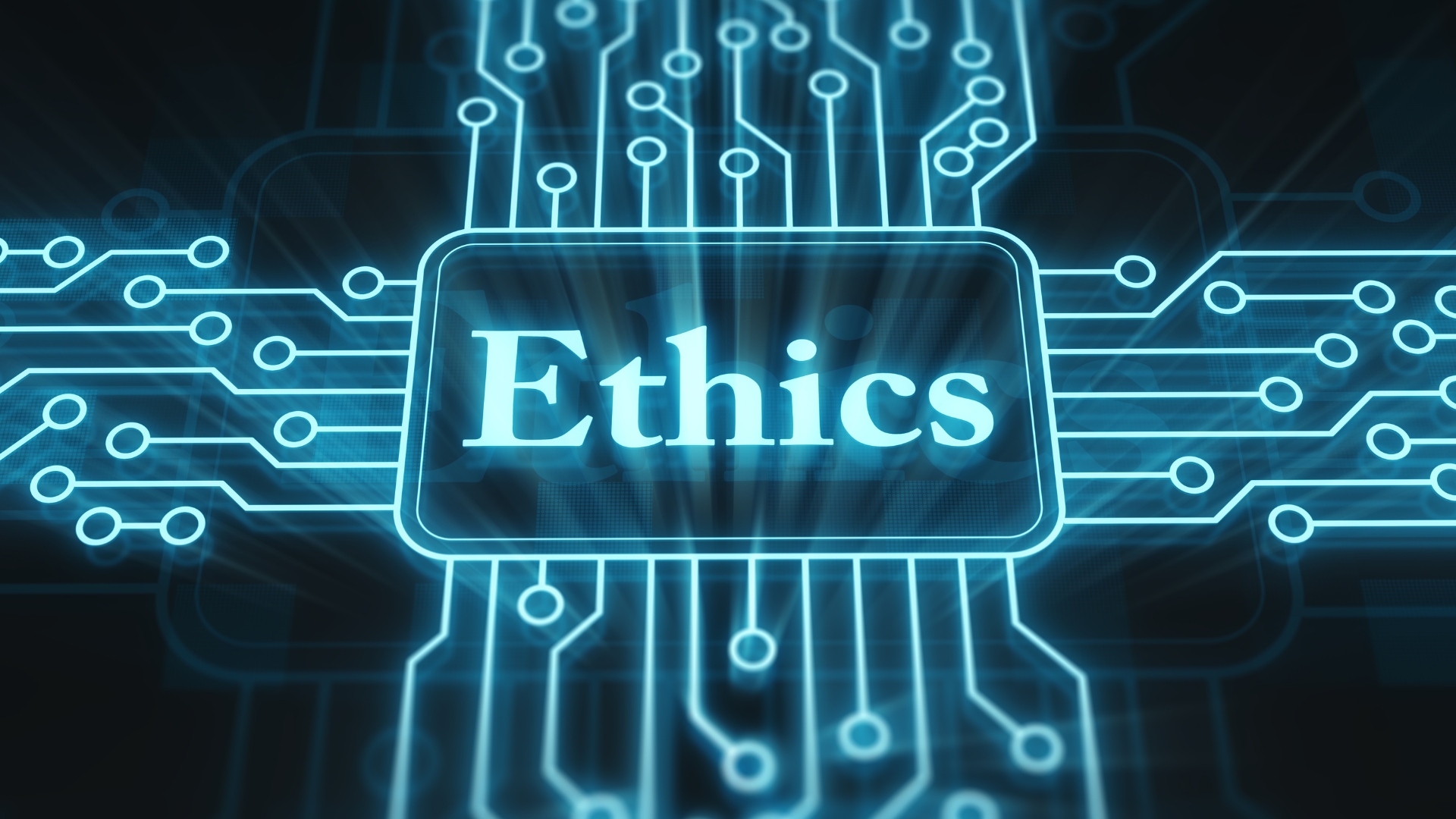
Critics of large language models (LLMs) such as ChatGPT claim that North American students seeking admissions to various undergraduate programs may use ChatGPT to game the system. However, these critics significantly fail to understand that professional services capable of ghostwriting high-quality college essays already exist on the internet. ChatGPT has only made the process of plagiarism simpler than ever before for many students. Also, the most critical and hitherto unanswered question here is: why are universities still considering essays for college admissions? A simple solution would be to replace college essays altogether with something more meaningful (personal interviews, for instance).
Speaking of systemic revamps, this is perhaps the right time for admission tests/exams to start focusing less on technique and more on understanding. This includes exams like the now-famous “JEE Advanced” taken by students from India. Pedagogical experts have long known that students can easily crack this exam by mastering several tried and tested exam-cracking techniques. However, these techniques have little to do with students’ understanding of the deepest concepts.
Dual-intent AI technologies
Speaking of AI, did you know that AI-based tools such as AlphaFold can rapidly predict protein structures and accelerate drug development? However, the benefit comes with a flip side: As innocent as it may sound, Alphabet Inc.’s AlphaFold can indeed be misused by nefarious elements for rogue research. For instance, the structure prediction algorithm can be used to engineer viruses with increased virulence and rapid transmissibility. How then, should lawmakers and AI researchers prevent bad actors from misusing this revolutionary technology? Although there is no easy answer to this question, in theory, such misuse could be prevented by guaranteeing access control and by periodically auditing AlphaFold usage without compromising user privacy. The system should algorithmically red-flag uses that fall into forbidden territories, for instance.
It is indeed surprising that big AI firms are routinely allowed to launch AI-based products and services without being mandated to establish the necessary ethical frameworks associated with them beforehand. It’s no different from launching a pharmaceutical drug without any rigorous clinical evaluation. Shouldn’t ethics supersede profitability? Long story short, AI research, just like any other form of research, needs to be carried out responsibly.
Role model for AI communities
Lastly, let’s make a quick and meaningful comparison. We all know that the CRISPR/Cas9 gene editing technique has gained enormous popularity in recent years. Luckily, unlike AI-based systems, this technique is heavily regulated at the moment and cannot be used for random clinical experimentation. Bioethicists, meanwhile, are trying to come up with a universal set of guidelines before approving it for clinical use. Why can’t similar measures be adopted in the area of AI research?
In summary, sociotechnical problems warrant sociotechnical solutions. What are your thoughts on AI and ethics? Please let us know in the comments section below.
By the way, did you know that satellite ERS-2 safely crashed into an ocean recently?
Tech
The Scientists Who Engineered the AIM-9 Sidewinder Missile
Two brilliant physicists originally developed the heat-seeking AIM-9 Sidewinder missile

Josephine was busy vacationing on Myrtle beach, South Carolina. From the balcony of her beach-view hotel, she saw something truly rare and mind-boggling: A fighter aircraft rapidly approached a mysterious air balloon and fired a missile at it. The powerful air-to-air missile destroyed the air balloon instantaneously. Unable to comprehend this bizarre situation, Josephine quickly logged in to her social media account. Within minutes, she saw a trending video with the following caption: “U.S. shoots down mysterious Chinese air balloon.”
The history of the AIM-9 Sidewinder missiles
According to a document published by the U.S. Patent and Trademark Office, the Sidewinder missile that brought down the trespassing Chinese air balloon was originally co-invented by Dr. Walter B. LaBerge. After returning from World War II, he obtained a Ph.D. in physics from the renowned University of Notre Dame in Indiana. Dr. LaBerge was also instrumental in building the Houston Mission Control Center. Besides, he also served at the Pentagon and was appointed as the Senior Vice President at Lockheed. Yet another brilliant physicist, Dr. William B. McLean, conceived the AIM-9 Sidewinder project. Dr. McLean, a U.S. Navy physicist, obtained his doctorate in the year 1939.
What was the Chinese balloon carrying?
Although there is no consensus on this topic at the moment, the Pentagon has openly declared that the Chinese air balloon was indeed carrying sophisticated surveillance equipment. Quite interestingly, it flew over Montana, the “treasure state” that stocks U.S. nuclear missiles. Did the balloon capture any sensitive photographs? We don’t know yet.
On a related note, a recently published study also assesses the public health risks associated with airborne chemical, biological, and radiological (CBR) substances. According to the study, airborne biological particles, also known as “bioaerosols,” have adversely affected public health in the recent past. Bioaerosols have been responsible for the rapid global spread of severe acute respiratory syndrome coronavirus 2 (SARS-CoV-2). In fact, a Chinese researcher, Dr. Weicheng Fan, has already worked on methodologies for investigating the atmospheric transport of hazardous CBR materials.
Increased vigilance required?
Of course, none of the Chinese-origin researchers involved in the aforementioned studies have devised models for the intentional aerial dispersion of CBR substances (let’s at least hope so). However, considering how China operates, it is very likely that the country may launch an aerial attack on the United States or any other country of interest in the near future. Going forward, nations must also make it a point to regularly analyze biological samples collected from migratory birds that routinely “trespass” on their land and into their airspace. Multiple published reports indicate that migratory birds can carry deadly viruses.
Although it is too early to make such a speculation, intruding air balloons are (theoretically) very likely to carry deadly CBR-harboring bioaerosols for rapid aerial dispersion.
Key takeaways
- Let’s thank the two brilliant Ph.D. physicists who played a key role in developing the heat-sensing AIM-9 Sidewinder missile.
- Innovation is fun, isn’t it? Moreover, did you know that the most successful folks on this planet do what they enjoy and enjoy what they do?
SciTechVault.com reviews, simplifies, and communicates research that matters. We diligently go through published (high-quality) scientific research from across disciplines, understand the underlying concepts, and authoritatively communicate the same to our target audience in a unique, simplified, and engaging manner. We also create scientific content for our YouTube channel. Did you get a chance to check out some of our recent scientific communications? (Founder: Dr. Nikhil A. Gokhale)
By the way, did you know that living near fast food outlets can increase your risk of stroke and heart disease?
Tech
Should Cops Replace Guns with Tasers and Sprays?
Tasers/chemical sprays reduce life-threatening injuries in suspects and law enforcement agents
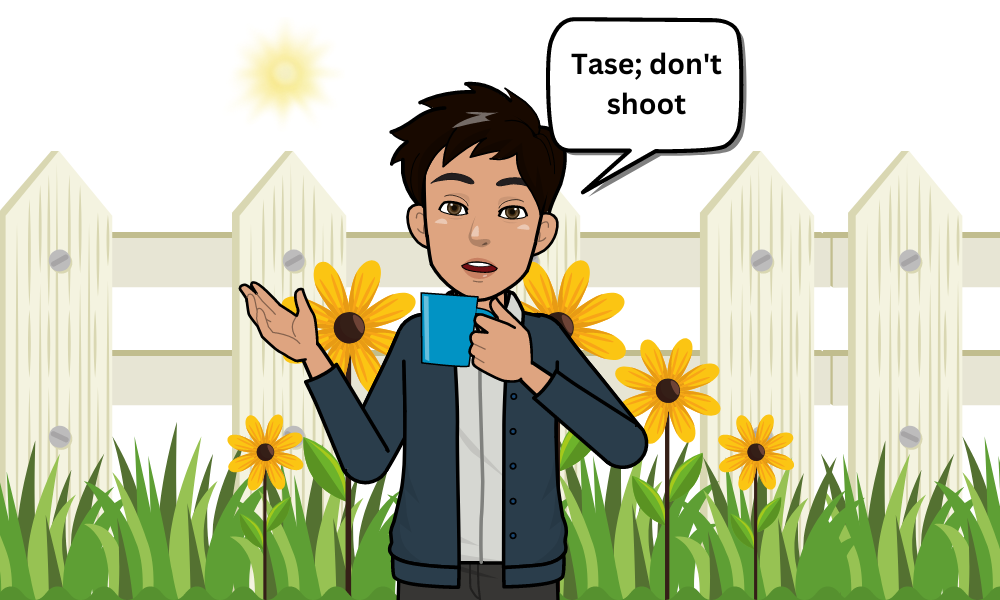
John was a seasoned cop. He had received specialized training for handling difficult situations. During his entire career, he had not killed any suspect. He preferred using conductive energy devices (CEDs) over guns.
Cops and guns
Research conducted so far indicates that less-than-lethal weapons, especially CEDs (popularly known as “tasers”), can reduce citizen and officer harm, thus improving the overall process of legal apprehension. However, researchers also feel the need to conduct detailed studies that directly compare the safety and efficacy of traditional firearms and tasers/chemical sprays.
Speaking of chemical sprays, 2-chlorobenzalmalononitrile or “CS” is a common type of tear gas or riot control agent used for controlling violent mobs/angry protestors. Oleoresin capsicum (OC) is used in pepper sprays. By the way, did you know that CS is more potent (and less toxic) than chloroacetophenone (CN)?
Note: In certain hostile situations, it is indeed difficult to replace traditional firearms with tasers and sprays.
How do tasers work?
Tasers are used to temporarily incapacitate deadly/escaping suspects. Experts believe that the odds of dying from a gunshot wound are greater than the odds of dying from a quickly administered electric shock. When cops use tasers, they essentially deliver an electric current with the help of two small probes that complete an electric circuit, once they touch the suspect’s body. Taser probes can penetrate and deliver a massive electric shock even through thick clothing. When a suspect gets tased, the temporary electric shock disrupts the communication between his/her brain and muscles. It also causes sudden muscular contraction. This causes the person to lose control and collapse almost instantaneously. Companies that manufacture taser guns are constantly trying to improve their design to ensure that they do not inflict any long-term damage.
Key takeaways
- According to John, less-than-lethal weapons and chemical sprays reduce life-threatening injuries in suspects and law enforcement agents.
- Scientists should conduct systematic research and explore the potential of tasers and chemical sprays as alternatives/replacements for guns.
Main reference
Journal: Aggression and Violent Behavior | Title: Can police use of less-than-lethal weapons reduce harm during violent police-citizen encounters? A systematic review and directions for future research | DOI: 10.1016/j.avb.2022.101748
By the way, did you know that centenarians sometimes carry a special gene with likely cardioprotective benefits?
Tech
Engineering Research Reveals Why We Love Chocolate
Tribology-based study focuses on the texture of melted chocolate
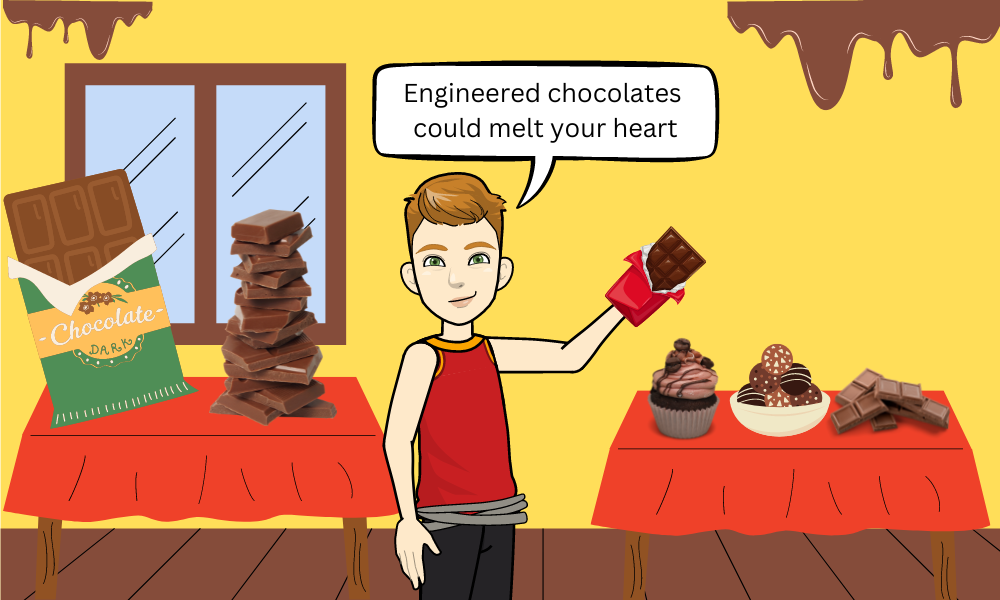
Benjamin was traveling to Las Vegas. Although he devoured chocolates most of the times, he also hated chocolate manufacturers primarily because they used the highly cost-effective (but heart-damaging) hydrogenated vegetable oils during the process of chocolate manufacturing. He was also unhappy about the presence of heavy metals in chocolate. Therefore, he wanted to come up with novel methods for the production of chocolate—methods that could be used to produce lead-free and cadmium-free chocolate.
In fact, Benjamin wanted to start his own chocolate-production facility with health-promoting ingredients. He was therefore looking for viable, sustainable, and healthy alternatives. He even thought of adding olive oil to his designer chocolates. However, before jumping into action, he wanted to get familiar with the manufacturing landscape. Benjamin’s work colleague, Lucas, had recently shared an insightful article on chocolate texture with him.
Our brains love the texture of melted chocolate
Benjamin: “Hey Luke, Benj here.”
Lucas: “What’s up, Benj? Did you enjoy reading the research article on chocolates?”
Benjamin: “Yup, it was delicious.”
Lucas: “I was in a hurry, so could not finish reading it. What did they say in the article?”
Benjamin: “The article was quite insightful. The research team said that the oral processing of chocolate transforms it into a molten mixture of food and saliva. We devour chocolates, not only because of their unique flavor, but also because of the nature-engineered biolubricant that they generate in the oral cavity. In other words, the smooth texture of the melted chocolate makes us fall in love with them. My wife loves chocolates a lot and so do I. But I want to start manufacturing chocolates that are healthier than the ones currently being sold across the globe. By the end of 2023, I plan to apply for funding. An angel investor from California has expressed interest.”
Can we create super-nutritious chocolate?
Lucas: “Best wishes for your entrepreneurial venture, Benj. By the way, what else did the peer-reviewed article say?”
Benjamin: “Well, the article also said that when chocolates melt inside our mouth, they release a “fatty” film that coats various oral surfaces including the tongue. This fatty film renders a smooth texture to the molten mix and that’s exactly what makes chocolates so irresistible. The team also pointed out that the outermost layer of chocolate should contain fat to enhance our sensory experience. However, chocolate cores need not harbor any fat at all. The researchers came to this conclusion after studying chocolate texture with an engineered tongue-like surface. This new information may aid the design of health-friendly dark chocolate with reduced fat content.”
Lucas: “That’s super interesting. What else do you plan to do now, Benj?”
Benjamin: “I am going to keep an eye on SciTechVault.com and on various article repositories to keep myself updated with the latest developments in this area. My designer chocolates will contain health-promoting ingredients for sure. A clinical trial published in The Journal of Nutritional Biochemistry has already shown that consuming 85% cocoa dark chocolate improves mood and exerts a prebiotic effect in healthy adults. Wish me good luck, Luke.”
Lucas: “All the best, buddy. I will see you tomorrow morning. Say hello to Patricia.”
Benjamin: “Thanks, Luke. See you tomorrow morning at 9:00 a.m.”
What is tribology?
Tribology is an interdisciplinary field of study that primarily focuses on the scientific and engineering aspects of friction, wear, and lubrication (e.g., the study of knee and hip joints after arthroplasty). A study published in Applied Sciences, for instance, states that ceramic-on-ceramic bearings are better than soft bearings when it comes to total hip replacement. According to the report, these bearings prevent the destruction of bone tissue.
Key takeaways
- Interdisciplinary research yields epic results. So let’s end compartmentalization and jump into each other’s territories with massive enthusiasm.
- Designer chocolates manufactured after incorporating the recommendations of interdisciplinary research are likely to be healthier and smoother than their currently available counterparts.
Main reference
Journal: ACS Applied Materials and Interfaces | Title: Insights into the Multiscale Lubrication Mechanism of Edible Phase Change Materials | DOI: 10.1021/acsami.2c13017
By the way, did you know that “sticky” negative emotions could increase your risk of dementia?










